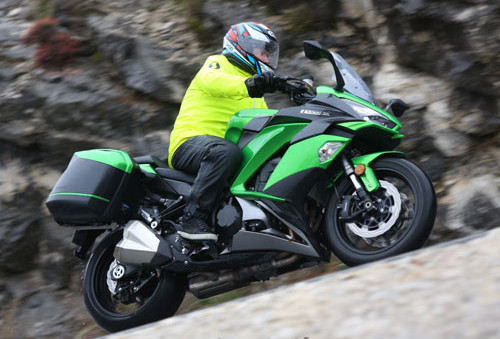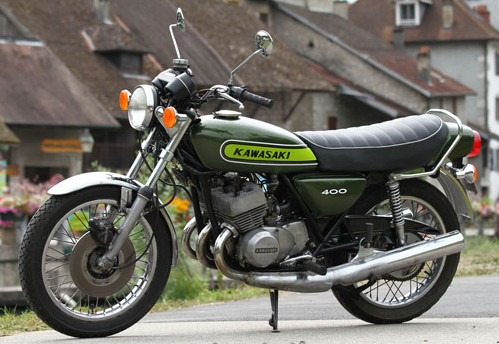Yamaha XV950 Racer Review. A version of custom bodied Bolt XV 950 R, the Racer has a single filter roasting, nevertheless full of testing flavors. For the Café Racer Japanese does not have his gun prices to attract. The fashion is in vintage style. And if you still find a classic in the Yamaha range, in the presence of the Yamaha SR 400 (at least until the end of the year), evocations the past with the neo-retro XSR the family, in the absence of a Scrambler model is the only Japanese to the three forks of the Café Racer movement is ultimately the XV 950 Racer test today on the station!
Custom "gently" roasted, it differs from the Bolt R XV950 (which it is derived) with a few simple adjustments. Its flagship is already fully dressed in a jump curved wind, with a passageway for cables and solid spacers to hold it. Its fork tubes are adorned with bellows. Its double saddle takes height (765 mm against 690 mm), the more it has a long bulging hood. From the XJR1300 and R 2015 also install exterior parts on the sides (at the drums) and of course the cockpit adopts handlebars bracelets sportier than the original wide hanger. To the riding position in tune, footrests were remote. Finally Yamaha reviewed the deflection of its suspensions to suit the kind. What transformed the "eater Yankees' Racer in the vintage spirit? For smaller budgets, why not...?
A look, and a prize!
For the first argument of the XV950 Racer is already its price: €7,999 (08/10/16), placed in a great price range Heritage Yamaha XV950 being displayed in the €8,499 and R declination better equipped (mother of Racer) is trading against the sum of €9,599. Less than €8,000 then, Yamaha offers a unique motorcycle, which does not perhaps attract purists, like Harley who have not rushed to the Bolt! But the look and philosophy certainly seduce fans of the genre more open to fashion.
They then have a well finished bike, both in the engine than the chassis treated "dark". A dark tint which contrasts nicely with the cool blue colors of our test Racer, whose tank and seat cover are covered with a white strip. The handlebar, if we find the stalks and mini LCD counter XV, the scenery takes place at the bracelets that inevitably results in a sporty driving position, torso tilted forward, so we adopt a totally right position on the original custom. Raised saddle, but still highly accessible "feet forward" banned in the presence of remote controls and enhanced, posture is sporty but not radical. The legs are in fact not too bent, however, to become one with the machine, again we regret the prominence of the right Airbox side and shifted left rear side cylinder, which interfere in the knees.
An easy town
Yamaha XV950 Racer is long and heavy (253 kg on our scale!), Which disadvantage the engine off but at a slow pace, given its falling direction. However, we have good support on the ground (even small jigs) and its small turning radius helps maneuvers in town. And thanks to its delicacy, the small size of the handlebars, it manages to emancipate traffic with ease.
In this context city, the availability of V-Twin in low revs gives serenity, despite this little jerk transmission remaining in the throttle opening. And whether to play the left lever, gear changes are facilitated by the presence of a flexible control, coupled to a gearbox however always a little reluctant. However, block vibration of 962 cm3 (lacking balancer) are never distracting for the driver, as the sound of the Racer who has also never disturb the peace of passersby. For if the original line is quite aesthetic, it has to recognize that in Europe (standards oblige!) his singing lacking charisma. The online catalog of Yamaha Akrapovic, among others, should definitely arrange it!
It lacks liveliness
This motor satisfactory approval Urban is more winded on expressways, penalized by its low power (52.1 hp. At 5500 rev / min). With the staging of the box 5 reports, however, it has interesting times by getting the lower fat in the towers, however it is clear that after this current low and medium speed, the V-Twin of Racer lacks longer. At least during transfers motorway, it enjoys a certain comfort with the aerodynamic position that generates only low downforce at the wrists. In addition, the seat of the Racer is more mellow than XV customs.
Characterized by increased deflections in the front and lowered at the rear, the new suspension agreement gives good resistance to the road Racer and more 'arguments in turn. We find it indeed a rigorous surplus in the course of maintenance, coupled with handling that improves a tad over that of Bolt. However, like the latter, the Racer, who fishes for lack of liveliness, require commitment from the pilot to make faster turn in fast combos.
They forgot the ground clearance!
Moto simple, the handling of the Café Racer Iwata is quick and its healthy cycle part quickly puts its driver (even novice!) Confident. So, quickly, we take good driving sensations to his handlebars, helped by lying down on the tank. Too bad the ground clearance of more limited quickly cut short corner taken barely spoken. It's frustrating, because the rigorous chassis incentive to increase the pace, but the filing of first footrest, then the selector left and right brake pedal requires returning.
However, braking side it's good! While the single front disc displays a moderate size, but as a custom classic, the rear brake applied more than a roadster, actively participates in slowing Racer. The mordant is present, but not exceptional. And if something goes wrong with ABS before, a successful system that shines here for its actuation discretion and its smooth operation, free from unpleasant feedback to commands.
Balance: Custom 100% Arabica
Grandmother can do a good coffee, and Yamaha is not doing so badly with his Café Racer entry. Ok, the 950 Racer XV although obviously not be full-bodied and authentic flavor of English new example (like the old way!), However the Japanese manufacturer does not offer us the low cost socks juice here.
The Racer this is primarily a look that fans (the less enlightened!) exhibit this philosophy without difficulty in town. But who, for lack of engine ground clearance too custom (thus limited) and a rather disparate assembly (basic Bolt, caches XJR), certainly will not delight the enthusiasts of the genre. Opening Question of mind, and budget!
Yamaha XV950 Racer Conclusion:
More:
Driving position
Manufacturing
Rigor
Price
Less:
Lively
Elongate
Ground clearance
Yamaha XV950 Racer:
Colors: matte gray, ice blue, 60th anniversary
Warranty: 2 years parts and labor
Approvals: Euro3
Yamaha XV950 Racer Price: €7 999 (at 08/10/16)


































